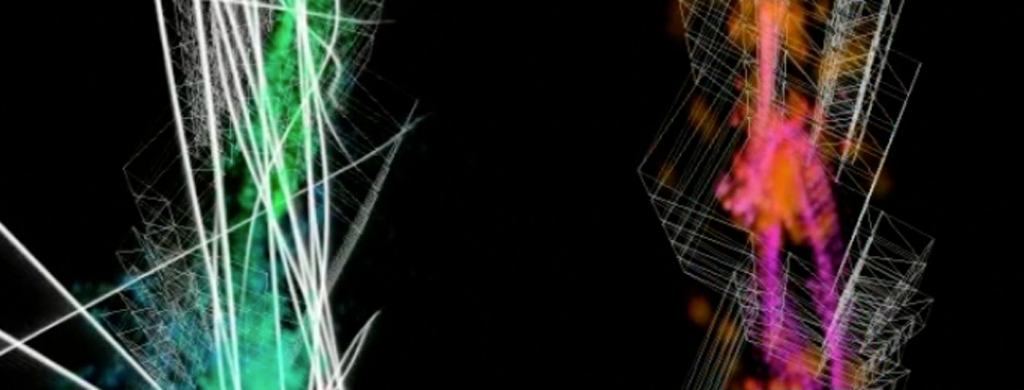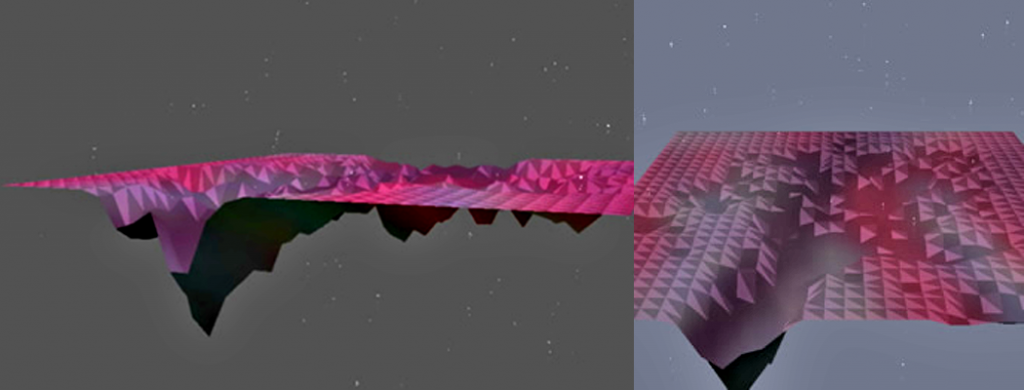Misc Projects

The Core Model represents the combined activities of the code at work within the Arch-OS system. The Core Model is available as a live 3D model of this code and can be downloaded as a screen saver or as an online 3D model. Every computer in the Portland Square building has the option of using the Core Model screensaver. This generates a dynamic recursive environment within the building. Sitting in the building the inhabitants can see a live, real-time 3D representation of the building, the space they occupy, on their screen. They can even pinpoint the data that is being generated by their viewing of the Core Model over their local network. The Core Model has many characteristics of ‘Liquid Architecture’. It has a high level of virtuality about it, but this model is a tangible and dynamic real-time inhabited space. Its existence is dependant on the occupants of the building and the digital fall-out from their interactions with it.
…adapts the ‘Artefact’ Project developed by MODEL, previously exhibited in gallery Gallery 70 at the V&A, London. Artefact and Recombinating Architecture both take the fluidity of objects and architectures as their starting point.
The Artefact and its interpretation panel slowly evolve as visitors to the website play with it and reinterpret its meaning. At the core of the Artefact Project is a 3D database drawn from the V&A Collection. For the duration of the show the ‘Artefact’ evolves through a generative breeding of this ‘genetic’ information. At some point in its evolution the ‘Artefact’ will become the collection.
Cybrid Landscape explores how the physical properties of a space can be mapped into a virtual space, or a cybrid in this case. A 3D virtual landscape represents the atria of a physical building. As people walk around the space, they wear away the landscape in virtual space, showing a history of movement throughout the day. This can be used to study movement in a building, but also be presented to the visitors to make them aware of the intelligent building and see if they would alter their path once they knew the destructive effect they were having on the virtual landscape. Cybrid Landscape uses the data published by the Arch-OS vision system.
Read ‘Arch-OS: An operating system for buildings’ (PDF), Peter Anders & Michael Phillips, ACADIA Conference 2004, which features Cybrid Landscape.
Cybrid Landscape was a winner in the Web3dArt 2005 competition.
Chris O’Shea | www.chrisoshea.org


